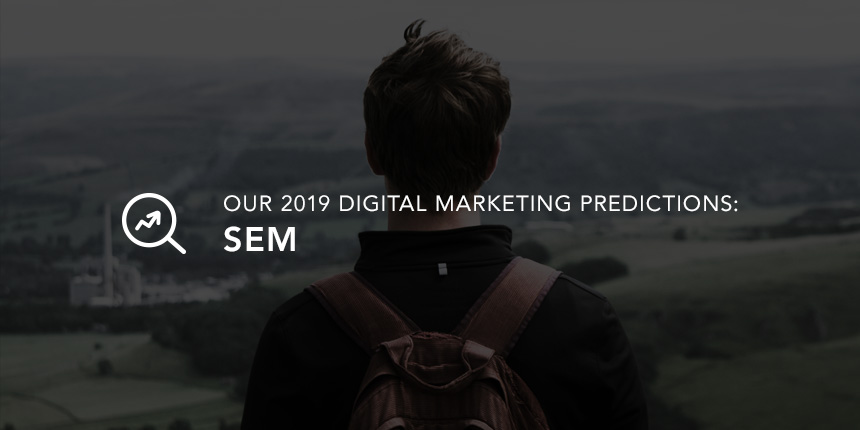To look forward, we must often look back. In 2018 we witnessed Google Ads take arguably its largest step towards a fully automated future. While many of the changes introduced may not be immediately embraced or even adopted, they provide key insights into what can be expected going forward.
Understanding and preparing for the future of search engine marketing—and thinking ahead to when optional features become standardised—is a critical component to running a strategic and successful program. With that in mind, here are our three predictions in paid media for 2019.
-
The rise of the machine (learning)
Last year we expected to see more brands willing to allocate greater portions of their budget to AI-driven platforms and solutions. In 2019 and forward, we anticipate this to become less of an option and more of a norm across the digital landscape.
Where advertisers once had to opt into new features with foundations in machine learning, things have quickly shifted as Google Ads and others evolve into automation-by-default products. Brands will need to be open to (and properly utilise) such changes to stay competitive.
In 2018 we also saw the introduction of Google Ad Suggestions. Unless an advertiser specifically opted out, the engine automatically generates copy based on landing page content and items currently in a program.
More importantly, Google Ads’ Responsive Search Ads format was introduced, in which a single entity can serve more than 43,000 unique permutations of copy based on an advertiser’s headline and description inputs.
Bolstered by ongoing machine learning, the algorithm will serve combinations most likely to generate clicks and conversions based on countless signals around searcher intent. While not all advertisers will have the luxury of allowing for fully automated messaging, the format presents a unique prospect to test which elements of copy are performing best at a scale not seen before—and we expect search marketing managers will seize this opportunity at a growing rate.
Sooner rather than later, we will see Google Ads (and other channels) introduce fully automated campaigns. It will be imperative that advertisers prepare accordingly to adopt and leverage these capabilities.
-
Paid content on the SERP will continue to expand
With the introduction of Responsive Search Ads, Google also added a third headline and additional description line to its already expanded ad format late in 2018. Relative to the original Standard Text Ad format (retired in early 2017), the available real estate on the SERP for a base ad alone has increased 184% in just two years. As such, we predict that 2019 will see more developments geared towards more robust content in paid results, moving away from the “brand name—call to action” format of days past.
It’s clear the way consumers are expected to interact with paid listings has changed. That’s why alignment and integration with Search Engine Optimisation for messaging on organic results—and information present in Knowledge Graph—will become critical components of a mature SEM strategy. In turn, we can expect competition to increase as the space available to multiple advertisers atop the SERP continues to shrink.
-
Message extensions are here to stay
As Google continues to model its offerings around the promise of a seamless mobile experience for users, we will see a growth in the adoption of the message extension. Gartner predicts that by 2020, 85% of consumer interaction with a business will not be with another human, and we anticipate this trend will be reflected in how people interact with search engines.
The pervasiveness and sophistication of chatbots has grown substantially through recent years, and with its focus on machine learning, it is likely we will see Google (and its competitors) attempt to become leaders in this area of growth.
Currently regarded as the text version of the click-to-call extension, in 2019 and onward we expect messaging from the SERP to be a more prevalent point of conversion and interaction with businesses for searchers.
Adapt, Adopt, Repeat
Of course, it’s always difficult to pinpoint exactly how the future may look—but change is one of the few certainties in the world of SEM. In 2019, we can expect that Google will further advance and standardise its automated offerings, which will not only open the door for more advertisers but also force those already utilising the programs to adapt.
“Manning the machine” and shaping strategies around these shifts will be paramount. As always, advertisers will have to be mindful about:
- the blurring line between the role of paid and organic SERP content;
- how to carefully manage a delicate and interconnected digital ecosystem;
- staying on top of the latest product offerings to continue driving the best possible user experience.
It’s a daunting task, but our paid media experts are up to the challenge. Find out how we can help your business reach the right audience with the right message at the right time: get in touch with DAC.




